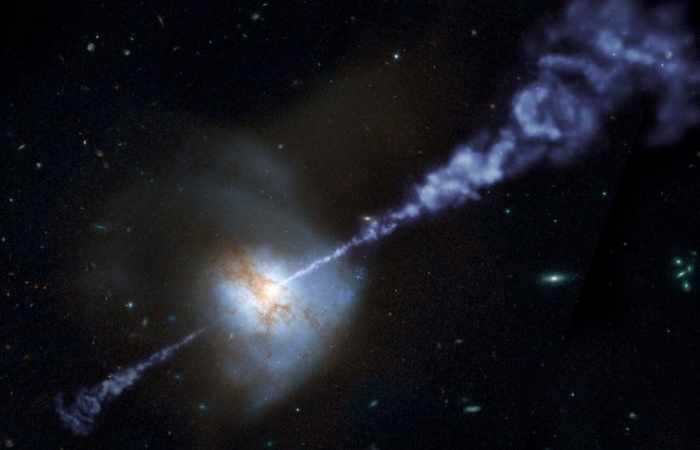A team of astronomers has found what it says is the best evidence yet for an elusive class of black hole.
They say the presumed "intermediate-mass" black hole betrayed its existence by tearing apart a wayward star that ventured too close.
These medium-sized objects are a long-sought "missing link" in the evolution of the cosmos.
Researchers used two X-ray observatories, along with the Hubble telescope, to identify the object.
"Intermediate-mass black holes are very elusive objects, and so it is critical to carefully consider and rule out alternative explanations for each candidate, said Dr Dacheng Lin, from the University of New Hampshire in Durham, US, who led the study.
"That is what Hubble has allowed us to do for our candidate."
In 2006, Nasa's orbiting Chandra X-ray Observatory and the European Space Agency's XMM-Newton satellite spotted a powerful X-ray flare named 3XMM J215022.4−055108.
The nature of the X-ray flare meant that it could be explained by just two scenarios, according to Dr Lin. It was "either a distant (outside our galaxy) intermediate-mass black hole disrupting and swallowing a star or a cooling neutron star in our own galaxy", he told BBC News.
Neutron stars are the crushed remnants of an exploded star.
There is a region of space beyond the black hole called the event horizon. This is a "point of no return", beyond which it is impossible to escape the gravitational effects of the black hole
In order to distinguish between the two scenarios, the Hubble Space Telescope was pointed at the X-ray source to resolve its precise location. The telescope provided strong evidence that the X-rays emanated not from an isolated source in the Milky Way, but in a distant, dense star cluster on the outskirts of a different galaxy.
This was just the type of place astronomers expected to find a mid-sized black hole. Dr Lin said the Hubble data made this the "most likely" explanation.
So-called supermassive black holes are commonly found at the centres of galaxies; for example, our own Milky Way hosts a massive central black hole called Sagittarius A*.
But intermediate mass black holes have been particularly difficult to find because they are smaller and less active than the massive types. In addition, they don't have as much nearby cosmic material to act as fuel, and lack the strong gravitational pull required to draw stars inwards to produce X-ray flares.
Astronomers effectively had to catch a mid-sized black hole red-handed in the act of gobbling up a star.
Dr Lin and his colleagues had to comb through thousands of XMM-Newton observations to find one candidate.
The X-ray glow from the shredded star allowed astronomers to estimate the black hole's mass at 50,000 times the mass of the Sun.
This isn't the first candidate for a mid-sized black hole. But seeing the object tearing a star apart makes this detection the most persuasive yet, according to Dr Lin's team.
Intermediate-mass black holes are key to many questions about black hole evolution. For example, does a super-massive black hole grow from a mid-sized one?
Astronomers also want to understand how mid-sized black holes form and whether they tend to reside in dense star clusters, such as this one.
"Studying the origin and evolution of the intermediate-mass black holes will finally give an answer as to how the supermassive black holes that we find in the centres of massive galaxies came to exist," said team member Dr Natalie Webb, from the University of Toulouse, France.
BBC
More about: blackhole
















































